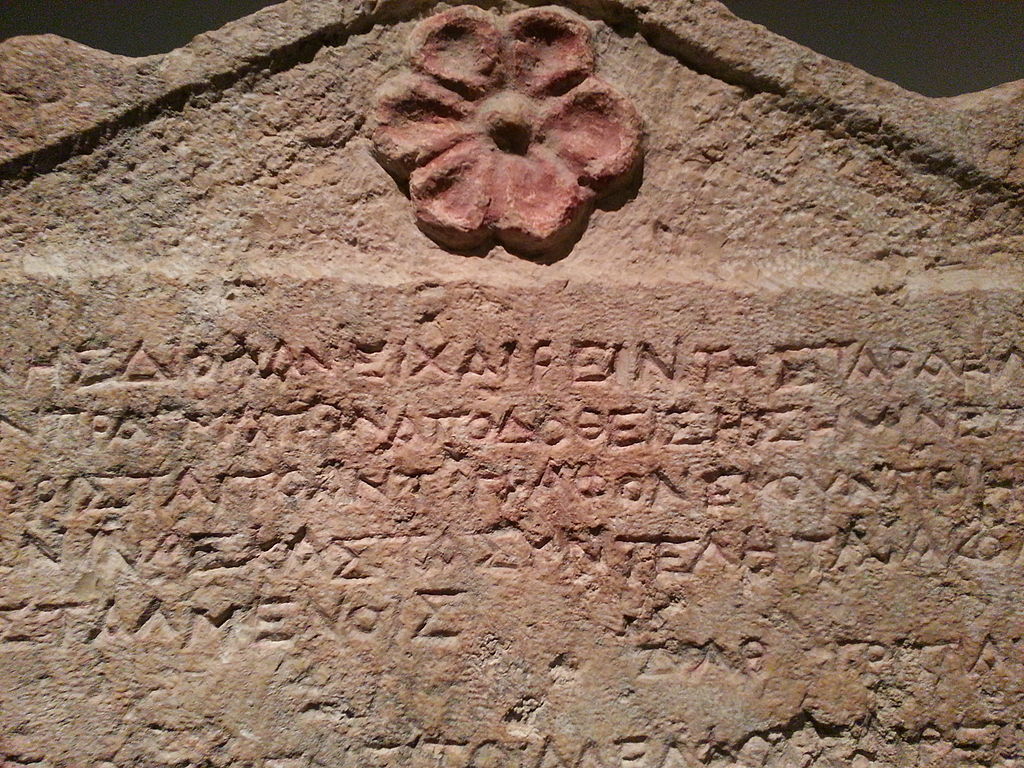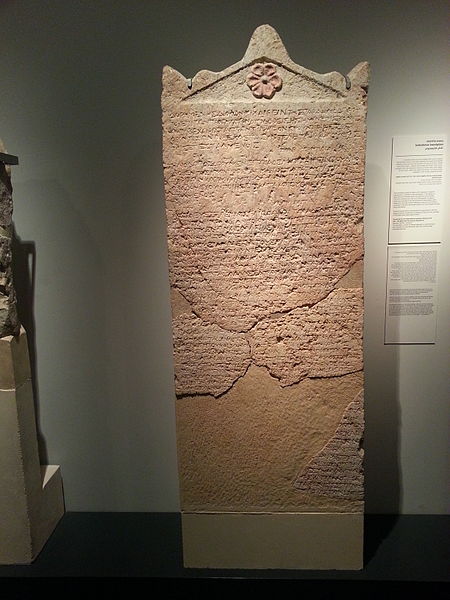
The looted Greek stele known as The Heliodorus Stele is still on display at the Israel Museum in Jerusalem despite the fact that it was among the many objects that were part of a plea deal in the notorious Michael Steinhardt artifact smuggling case.
The 81-year-old New York City billionaire, who was a well-known hedge fund manager, agreed to a plea deal in late 2021 with the District Attorney of Manhattan in one of the largest art looting and smuggling cases in history.
Steinhardt surrendered $70 million worth of antiquities and art, amounting to 179 different objects, that had been smuggled out of Europe and Asia to be amassed as part of his vast collection. He had even loaned out certain pieces to institutions over time, including the august Metropolitan Museum of Art.
The Met even has an entire gallery — the Judy and Michael Steinhardt Gallery — named after the couple.
The antiquities from Steinhardt’s collection that will be returned to Greece are from the Cycladic Islands, Crete, Central Greece, Samos, and Rhodes. They include a number of bronze swords, figurines, a Minoan shrine, a bronze griffin bust, and a kouros statue.
The hedge-fund titan and philanthropist’s collection of nearly 200 priceless antiquities from at least 11 countries, including Greece, Egypt, Iraq, Turkey, and Syria, was one of the largest assemblages of looted art in the entire world.
The hedge fund manager escaped prosecution by the plea deal, arranged by Manhattan DA Cy Vance.
The Associated Press reports that eight Neolithic-era masks that had been loaned by Steinhardt to the Israel Museum in 2014 were also seized as part of the billionaire’s deal with the DA — and two of those are also on exhibit at the Museum in Jerusalem.

The Israel Museum states in its catalogue that the stele is “unique,” adding that it “provides new insight into the dramatic story of Heliodorus and the Temple in Jerusalem, as related in the Second Book of Maccabees. The newly deciphered stele presents new information about Heliodorus, who, according to the Second Book of Maccabees, received orders to seize the treasure in the Temple in Jerusalem.
“The stele documents a correspondence in ancient Greek between Heliodorus and King Seleucus IV, ruler of the Seleucid Empire from 187 to 175 BC, who was succeeded by Antiochus IV Epiphanes (best known from the story of Hanukkah).”
Steinhardt surrendered ownership of The Heliodorus Stele last month, but it is still displayed as of this week — with his name as the owner — at the Museum.
As one of the Museum’s major patrons, Steinhardt approached the institution’s officials back in 2007, asking them if they would like to borrow the Stele, telling them that he had bought it recently.
However, experts at the Museum were quick to notice that pieces of text carved into two stones that had been unearthed one year prior in a dig near Jerusalem fit the limestone slab like pieces in a jigsaw puzzle.
Clearly, Steinhardt’s tablet must have originated from the same cave where the other fragments had been found.
The revelation that the Stele and the other objects surrendered by Steinhardt are still exhibited at the Museum as if nothing had changed regarding their provenance is a troubling one at a time when Museums around the globe are facing increased calls for the repatriation of stolen and looted art.
As has so often happened over the course of human history, objects of immense artistic and historical importance have often been spirited out of their places of origin, with some collectors maintaining that they were doing a favor to the countries whose art was stolen in “saving” them from possible destruction during wars and other strife.
But growing calls for such items to be repatriated are making Museum curators and directors across the globe uneasy.
Donna Yates, a criminologist who specializes in artifact smuggling at Maastricht University, tells the Associated Press that several recent scandals involving looted artifacts are “causing museums to reconsider the ownership history of some of the objects that they have.
“They can’t really afford the public embarrassment of constantly being linked to this kind of thing, because museums aren’t wealthy and many of them hold a place of public trust,” she states.
The Israel Museum denied any wrongdoing in a statement, saying it “consistently follows the applicable regulations at the time the works are loaned” adding that all its policies are carried out “in full cooperation” with the Israeli Antiquities Authority.
Related: Steinhardt’s Looted Antiquities to Return to Greece
For his part, James Snyder, the director of the Israel Museum from 1997 to 2016, told the press that all artifacts accessioned by or loaned to the Museum have their provenance investigated by the IAA before they are placed on exhibit. He further stated that Steinhardt’s other looted artworks also “came with documentation of legal ownership.
“We were given documentation of legal purchase, it was approved to come in on loan and it was approved to be returned” by the authority, Snyder told the AP.
However, Israel has an unusual setup in that the country’s 55 licensed antiquities dealers are allowed to sell objects that were discovered before 1978, the date when all such items became state property.
Unfortunately, this loophole has provided an outlet for the “laundering” of smuggled and looted antiquities from all around the Middle East, with fake documentation provided by Israeli dealers. It is unknown how many such objects may have fallen victim to this practice before the country started closing the loophole in 2016.
It was only then that Israel began mandating the creation of a digital database of dealers’ artifacts.
The thousands of priceless cuneiform tablets originally from what is now Iraqi and Syria which were part of the infamous Hobby Lobby case had been smuggled to Israeli dealers before being sold to collectors with just such fake documentation.
It’s all about the money, and there is no shortage of wealthy people who feel the need to own these priceless artifacts. Morag Kersel, an archaeology professor at DePaul University in Illinois, explains that the unconscionable plunder of archaeological sites, ultimately, “is all demand driven.”
Related: The Greek archaeologist who helped expose Michael Steinhardt
“Looters do this because there’s someone like Steinhardt who’s willing to pay money and buy things that come straight out of the ground,” she states.
Steinhardt is a significant patron of the Israel Museum as well as many other institutions in the country, including a natural history museum at Tel Aviv University which is named after him.
Partial US tax filing information shows that Steinhardt’s family foundation has donated over $6.6 million to the Israel Museum just since 2001.
It was only after Steinhardt loaned a sculpture of a bull’s head that had been looted from an archaeological site in Lebanon to the Metropolitan Museum of Art that the Manhattan DA launched his investigation into the hedge fund manager’s enormous collection of antiquities.
Legally, Vance’s office states that the three items on display at the Israel Museum are “effectively seized in place.” The DA has started talks with Israel in hopes that 28 additional items may one day be returned to their rightful owners, but his statement said that Steinhardt “has been unable to locate” the last nine items whose provenance can be traced to Israel.
For its part, the Israel Museum said it was examining the matter after just recently having learned about the settlement. The DA’s office charged in the settlement that Steinhardt “knew, or should have ascertained by reasonable inquiry” that his antiquities had been looted and smuggled.
See all the latest news from Greece and the world at Greekreporter.com. Contact our newsroom to report an update or send your story, photos and videos. Follow GR on Google News and subscribe here to our daily email!



